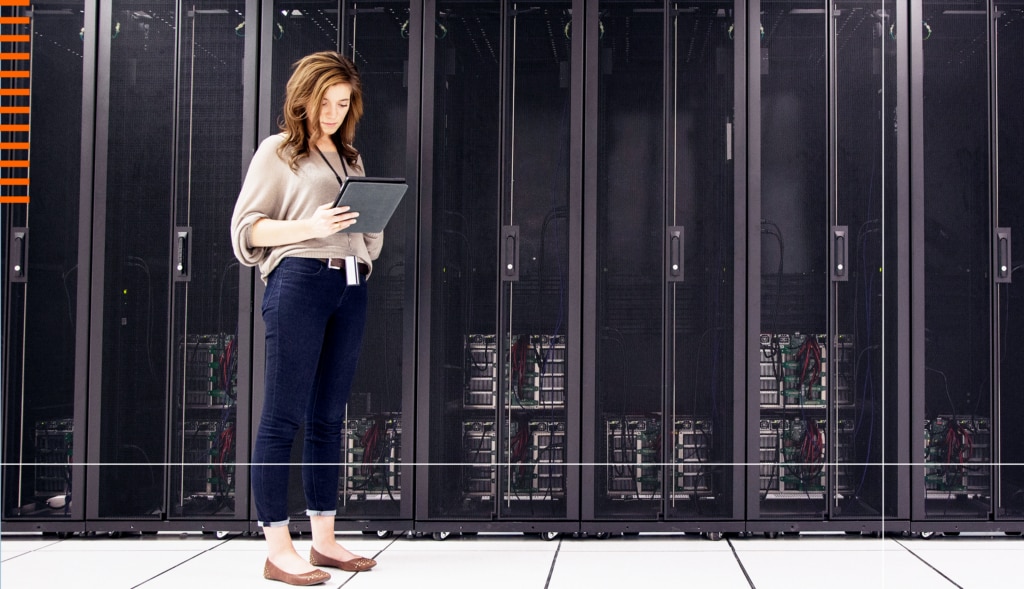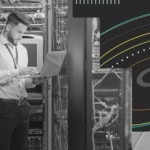In the ever-evolving IT landscape, the Observability Dilemma casts a strategic shadow: To SaaS or not to SaaS, a question being dealt with by many IT professionals today. As organizations grapple with the complexities of maintaining system health and performance, navigating change while staying secure, choosing between the allure of cloud-based services and the on-premises sanctuary becomes pivotal. Join us as we navigate this terrain, dissecting the nuanced landscape of the Observability Dilemma to guide you towards informed choices that resonate with your tech aspirations.

Understanding Observability
Defining Observability in the context of IT operations
Within the complex area of IT operations, an understanding of the benefits and impact of Observability is indispensable for clarity. Many terms that have entered the IT lexicon may have different interpretations depending on who you talk to. The following attributes are most likely familiar to most interpretations: Observability goes beyond standard monitoring, with the ability to weave together metrics, logs, traces, and more and synthesize these inputs to determine the state of the infrastructure or make predictions about the future state.
Amid the continual waves of digital transformation, Observability emerges as the keystone, delivering insights that surpass ordinary oversight. It gives a foresight into disruptions, enabling a proactive stance in the dynamic landscape of technological change.
The role of Observability in maintaining system health and performance
Navigating the intricate landscape of modern digital frameworks, Observability assumes a pivotal role. Beyond traditional monitoring, it acts as a vigilant custodian, integrating key parameters to ensure the seamless visibility of hybrid systems. With precision and depth surpassing routine oversight, Observability meticulously deciphers intricacies and inter-dependencies, unveiling anomalies that might otherwise go unnoticed. Observability takes on the role of a conductor in orchestrating system health and performance, harmonizing the complexities within modern hybrid infrastructures.
The Two Contenders
A closer look at SaaS (Software as a Service)
Advantages of SaaS in Observability:
- A SaaS-based approach can empower you to embrace flexible characteristics, enabling your system to scale dynamically based on evolving demands.
- The elastic nature of SaaS ensures an adaptive architecture, accommodating the ‘just-in-time’ mindset of modern IT setups.
- SaaS-based Observability offers a hassle-free experience with automatic updates, ensuring your system is up to date.
- You can optimize your operational model with a subscription approach to align your IT budgeting with modern IT practices.
- The cloud-based nature of SaaS transcends geographical limitations, providing seamless monitoring and insights from anywhere in the world (subject to the vendor's arrangements).
Limitations and considerations:
- Relying on a third-party provider may pose risks in case of service interruptions.
- Embracing SaaS for Observability may pose security challenges. The reliance on external providers demands a meticulous evaluation of data protection measures to safeguard sensitive information.
- While SaaS offers agility, its off-the-shelf nature may limit customization. Organizations with precise requirements might find constraints in tailoring the solution to match unique operational needs.
- Organizations grappling with data sovereignty regulations must navigate potential complications as SaaS may involve data storage across different geographic locations.
- Achieving seamless integration with existing infrastructures can pose complexities, demanding a strategic approach to ensure a cohesive and efficient operational ecosystem. However, this complexity may be mitigated if there is a bridge between the existing self-hosted and SaaS solutions.
Delving into self-hosted solutions
Control and customization benefits:
- Control: Opting for self-hosted Observability provides organizations unparalleled control over their monitoring infrastructure, allowing for tailored configurations and optimizations.
- Enhanced Security Measures: The self-hosted model empowers businesses to implement robust and bespoke security measures, protecting sensitive data and mitigating potential vulnerabilities. However, the skills and expertise to implement and maintain this must be factored into the equation.
- Air-Gapped Environments: Self-hosted Observability is particularly advantageous for organizations operating in air-gapped environments, providing a solution that aligns seamlessly with their unique security and operational needs.
- Tailored Configurations: Organizations can fine-tune configurations to align with specific requirements, enhancing the precision and relevance of Observability metrics.
- Data Sovereignty Assurance: Self-hosted solutions offer assurance regarding data sovereignty, addressing concerns related to regulatory compliance and ensuring data remains within specified geographic boundaries.
- Independence from External Dependencies: By self-hosting Observability, organizations reduce dependency on external providers, offering a degree of independence and mitigating risks associated with third-party service disruptions.
Potential drawbacks and challenges:
- Resource-Intensive Maintenance: Hosting your Observability comes with maintenance responsibilities, demanding attention to keep the system optimized and responsive.
- Upgrades: The onus of managing and executing upgrades falls on the organizations, introducing complexities that require strategic planning and execution to minimize downtime and disruptions.
- Potential Scalability Challenges: As demands evolve, self-hosted Observability might encounter scalability challenges, necessitating proactive measures to ensure seamless performance during periods of increased demand.
- Expertise Dependency: Efficient self-hosting requires a certain level of technical expertise, creating a dependency on skilled personnel to navigate potential challenges and optimize the Observability infrastructure.
- Security Risks: Self-hosted solutions may expose organizations to inherent security risks, demanding vigilant cyber-hygiene and continuous efforts to safeguard against potential vulnerabilities and cyber threats.
- Limited Flexibility in Deployment: The custom nature of self-hosted Observability may limit flexibility in deployment, requiring careful consideration to align with dynamic organizational needs and evolving industry standards.
Assessing Your Tech Needs
Before implementing an Observability solution, thoroughly assess your organization's tech needs. Consider scalability, cost, security, integration capabilities, customization potential, and compliance requirements. This ensures the solution aligns with your goals and increases your chance of success.

Scalability considerations and growth planning
Scalability is foundational in tech planning. Assess potential growth trajectories and align the Observability solution for seamless expansion without compromising efficiency. This forward-looking strategy not only future-proofs your system but also fortifies it to meet the challenges posed by evolving data landscapes and the dynamic demands of your organization’s growth.
Cost Analysis
Breaking down the cost structure of SaaS
It's worth weighing up the potential financial pros and cons of a SaaS-based approach. Consider some of the following factors when deciding what is the right path for you:
- Subscription fees, while predictable, may accumulate.
- Are there hidden costs, such as additional user charges or premium support fees?
- Consider the reduced effort and expense of maintenance and upgrades in a SaaS model.
- Are there any additional costs related to data storage in a SaaS environment?
- A SaaS approach may reduce the need for significant in-house development expenses.
- Assess potential costs and risks associated with vendor lock-in when opting for a SaaS approach.
- Evaluate any charges associated with data transfer between your current infrastructure and the SaaS provider’s platform.
Evaluating the upfront and ongoing costs of self-hosted solutions
- Self-hosting requires substantial initial investment (CapEx) but may prove cost-effective.
- How much upfront investment is needed to make the self-hosted infrastructure scalable for future growth?
- How much will the ongoing maintenance costs be, including hardware repairs, replacements, upgrades, and other operational overhead (OpEx) associated with the data center/server room, such as air-conditioning costs?
- Make sure to factor in the ongoing salaries and benefits of an in-house development team responsible for maintaining the self-hosted solution.
- Consider the costs of implementing and managing software updates for self-hosted Observability tools.
- Account for ongoing training costs for staff members responsible for managing and maintaining the self-hosted infrastructure. Is this included in the contract?
- What about the expenses of maintaining an in-house support team to address issues and provide assistance?
- Consider potential costs associated with technology obsolescence, including upgrading hardware and software components over time.
Security Matters
Examining the security implications of SaaS
While considering whether to go down the self-hosted route, the SaaS route, or which SaaS solution to choose, being thoroughly prepared isn't a choice; it's fundamental to security.
Encryption, multi-factor authentication, regulatory considerations, and data segregation are among many things to factor in and may be non-negotiable. Being well-prepared stands as the frontline defense against the ever-evolving cyber threat landscape. The following are some areas worthy of consideration:
- Verify that the SaaS platform implements robust access controls, limiting user access based on roles and responsibilities.
- Assess the effectiveness of authentication methods, such as multi-factor authentication, to enhance account security.
- Check if the SaaS provider complies with industry-specific regulations and holds the relevant certifications (HIPAA/HITECH, NIST 800-171, PCI DSS, GDPR, etc.) your company requires.
- Ensure your data is logically segregated from other users' data within the SaaS platform to prevent unauthorized access.
- Clarify the procedures for data portability and develop an exit strategy in case you decide to migrate away from the SaaS provider.
- Ensure the SaaS provider promptly applies security patches to address vulnerabilities in their software.
- Understand where your data will be stored and processed, ensuring it complies with regional data protection laws.
- To what extent does the SaaS provider monitor and log user activities for security analysis?
- Review the results of any third-party security audits or assessments conducted on the SaaS platform.
- What are the SaaS provider's agreements on data ownership and control terms, and do they align with your security policies?
Security Considerations for Self-Hosted Observability Solutions:
- Get a clear understanding of the self-hosted solution's access control mechanisms, ensuring they effectively manage user privileges and restrict access to critical resources.
- Make sure the self-hosted platform has strong user authentication methods, including features like Two-Factor Authentication (2FA), to enhance access security.
- Does the self-hosted solution incorporate regular and thorough vulnerability scanning to identify and address potential weaknesses proactively?
- Ensure the self-hosted environment has efficient and timely patch management to keep software and systems up-to-date and reduce the risk of exploitation.
- Check if the self-hosted solution undergoes regular security audits to provide assurance about the overall security posture and identify areas for improvement.
- Check if the self-hosted environment facilitates timely and seamless security updates to patch known vulnerabilities and protect against emerging threats.
- Choose a self-hosted solution that conducts regular penetration testing to simulate real-world attacks, identifying potential weaknesses and demonstrating a commitment to ongoing security enhancement.
Integration Capabilities
Ensuring smooth integration is crucial for streamlining your workflows and enhancing productivity. With SaaS, you can get pre-built integrations for easier connections with third-party apps. However, although they require technical expertise, self-hosted solutions may offer more customization options. Prioritize solutions that align with your existing systems and skill sets to ensure smooth data flow and operational efficiency.
Compatibility with and potential deprecation of other tools and technologies
Consider how SaaS and self-hosted options align with your current tools and technologies. SaaS prioritizes standard APIs and cloud-based architectures for easy integration, while self-hosted solutions offer more control but may require tailored integration. Assess compatibility while working with what you must optimize efficiency and minimize disruptions to your business. This is also an opportunity for you to simplify your tech stack and potentially save costs.
Customization Potential
When assessing "Customization Potential" in SaaS versus self-hosted solutions, it's crucial to evaluate the extent of customization offered by SaaS providers. SaaS platforms often strike a balance between user-friendly interfaces and customization options, and you will need to ensure you're not giving up control for comfort and convenience.
While the robust customization of self-hosted solutions allows for tailoring software to unique needs, a downside is the potential complexity and resource intensity involved. What do they offer by way of out-of-the-box options and templates, and will this suffice? Extensive customization may demand higher technical expertise, dedicated resources, and increased time and costs compared to ready-made SaaS solutions. As always, it comes down to your priorities and compromises you may need to make based on time, budget, resources, skill sets, etc.
Operational Ease
Operational ease is a critical factor when comparing SaaS (Software as a Service) and self-hosted solutions. SaaS offerings typically excel in simplicity, as they are managed and maintained by the service provider. Users benefit from seamless updates, automatic backups, and reduced IT overhead. On the contrary, self-hosted solutions demand more hands-on management, requiring users to handle updates, security patches, and server maintenance, potentially making them more complex to operate. Of course, the degree of ‘care and feeding’ will vary from vendor to vendor, where some self-hosted solutions will focus on Ease with plenty of templates and out-of-the-box tools.
Scalability and Flexibility
When comparing scalability and flexibility, SaaS excels in handling fluctuating workloads through cloud infrastructure, offering a hassle-free and cost-effective solution. In contrast, a self-hosted approach provides customization for unique IT environments but faces scalability limitations tied to the organization's infrastructure capabilities. Managing self-hosted solutions requires dedicated IT resources, adding to costs and operational burden. Some solutions will offer a scalability option, which may help alleviate the piecemeal scaling of a more modular approach and provide adequate scaling for your needs. In summary, SaaS is ideal for businesses with dynamic workloads, while self-hosted solutions suit those needing customization but may face scalability challenges.
Performance Metrics and KPIs
When considering KPIs and performance metrics such as response time, mean-time-to-resolution (MTTR), Network latency, uptime, and more, comparing and contrasting SaaS Observability and self-hosted Observability reveals distinct characteristics. In the case of SaaS Observability, performance metrics, and KPIs are often seamlessly tracked with built-in analytics, simplifying the monitoring of key indicators such as response times and anomaly detection. The emphasis is on convenience and ease of use.
In contrast, self-hosted Observability allows for more extensive customization of metrics, tailoring them precisely to organizational needs. However, this flexibility demands meticulous tracking and may involve additional tools for comprehensive metric analysis. It’s also worth investigating if the vendor has an active user community with a healthy collaborative culture. This can be a time saver and a great way for customers to share best practices for KPI dashboards, custom properties, etc.
The trade-off lies between the convenience of SaaS, offering ready-to-go monitoring, and the flexibility of self-hosted solutions, providing a more tailored but potentially intricate Observability landscape.
- Does the self-hosted solution incorporate regular and thorough vulnerability scanning to identify and address potential weaknesses proactively?
- Ensure the self-hosted environment has efficient and timely patch management to keep software and systems up-to-date and reduce the risk of exploitation.
- Check if the self-hosted solution undergoes regular security audits to provide assurance about the overall security posture and identify areas for improvement.
- Check if the self-hosted environment facilitates timely and seamless security updates to patch known vulnerabilities and protect against emerging threats.
- Choose a self-hosted solution that conducts regular penetration testing to simulate real-world attacks, identifying potential weaknesses and demonstrating a commitment to ongoing security enhancement.
Integration Capabilities
Ensuring smooth integration is crucial for streamlining your workflows and enhancing productivity. With SaaS, you can get pre-built integrations for easier connections with third-party apps. However, although they require technical expertise, self-hosted solutions may offer more customization options. Prioritize solutions that align with your existing systems and skill sets to ensure smooth data flow and operational efficiency.
Compatibility with and potential deprecation of other tools and technologies
Consider how SaaS and self-hosted options align with your current tools and technologies. SaaS prioritizes standard APIs and cloud-based architectures for easy integration, while self-hosted solutions offer more control but may require tailored integration. Assess compatibility while working with what you must optimize efficiency and minimize disruptions to your business. This is also an opportunity for you to simplify your tech stack and potentially save costs.
Customization Potential
When assessing "Customization Potential" in SaaS versus self-hosted solutions, it's crucial to evaluate the extent of customization offered by SaaS providers. SaaS platforms often strike a balance between user-friendly interfaces and customization options, and you will need to ensure you're not giving up control for comfort and convenience.
While the robust customization of self-hosted solutions allows for tailoring software to unique needs, a downside is the potential complexity and resource intensity involved. What do they offer by way of out-of-the-box options and templates, and will this suffice? Extensive customization may demand higher technical expertise, dedicated resources, and increased time and costs compared to ready-made SaaS solutions. As always, it comes down to your priorities and compromises you may need to make based on time, budget, resources, skill sets, etc.
Operational Ease
Operational ease is a critical factor when comparing SaaS (Software as a Service) and self-hosted solutions. SaaS offerings typically excel in simplicity, as they are managed and maintained by the service provider. Users benefit from seamless updates, automatic backups, and reduced IT overhead. On the contrary, self-hosted solutions demand more hands-on management, requiring users to handle updates, security patches, and server maintenance, potentially making them more complex to operate. Of course, the degree of ‘care and feeding’ will vary from vendor to vendor, where some self-hosted solutions will focus on Ease with plenty of templates and out-of-the-box tools.
Scalability and Flexibility
When comparing scalability and flexibility, SaaS excels in handling fluctuating workloads through cloud infrastructure, offering a hassle-free and cost-effective solution. In contrast, a self-hosted approach provides customization for unique IT environments but faces scalability limitations tied to the organization's infrastructure capabilities. Managing self-hosted solutions requires dedicated IT resources, adding to costs and operational burden. Some solutions will offer a scalability option, which may help alleviate the piecemeal scaling of a more modular approach and provide adequate scaling for your needs. In summary, SaaS is ideal for businesses with dynamic workloads, while self-hosted solutions suit those needing customization but may face scalability challenges.
Performance Metrics and KPIs
When considering KPIs and performance metrics such as response time, mean-time-to-resolution (MTTR), Network latency, uptime, and more, comparing and contrasting SaaS Observability and self-hosted Observability reveals distinct characteristics. In the case of SaaS Observability, performance metrics, and KPIs are often seamlessly tracked with built-in analytics, simplifying the monitoring of key indicators such as response times and anomaly detection. The emphasis is on convenience and ease of use.
In contrast, self-hosted Observability allows for more extensive customization of metrics, tailoring them precisely to organizational needs. However, this flexibility demands meticulous tracking and may involve additional tools for comprehensive metric analysis. It’s also worth investigating if the vendor has an active user community with a healthy collaborative culture. This can be a time saver and a great way for customers to share best practices for KPI dashboards, custom properties, etc.
The trade-off lies between the convenience of SaaS, offering ready-to-go monitoring, and the flexibility of self-hosted solutions, providing a more tailored but potentially intricate Observability landscape.

Decision-Making Framework
To get clarity and, crucially, gain a consensus among the key stakeholders, it can be useful to build a comprehensive decision-making matrix with key criteria agreed to by the stakeholders, technical and non-technical.
Creating a matrix involves weighing factors, including some of the criteria already laid out above (cost, security, usability, etc.), in addition to others that matter most. Start with the must-haves, and then look at the nice-to-have items that you may wish to include if they fit your budget. This framework streamlines and democratizes the decision-making process. This approach also reduces the risk of a tactical, agenda-driven purchasing decision. For instance, if the decision lands with the network or systems persona, it may discriminate against a solution that fulfills needs beyond its defined scope. Including diverse personas and their management should result in a better solution for all concerned.
Click here to download a sample checklist that will help guide your decision-making process:

Migration Strategies and Vendor Considerations
As always, the correct choice and decision on whether to go with SaaS depend on a broad spectrum of scenarios ranging from - my company being fully self-hosted and wanting to stay that way to having an everything must-be as-a-service goal and everything in between. The following factors and positions may have an influence – for better or worse – on your next step. It’s worth pausing to make sure it's the right one to avoid pain, frustration, and, of course, being assigned blame for a bad choice:
- Your location is remote and not suitable for a SaaS implementation. Your mind is made up if you're in this cohort, so you probably haven't read this far.
- There are security mandates, meaning SaaS is out of the question. For example, air-gapped is your default setup.
- My [blank] Admin makes these decisions, and I leave it to him/her. If this is your position, beware of personal biases or self-serving agendas, and involve multiple stakeholders (including senior decision-makers) in the process to get an outcome that supports the greater good.
- I'm an Admin and would love [self-hosted or SaaS Observability], but I don't have the decision power or budget. It’s definitely worth getting management involved in the next step, whichever that may be. This will likely make IT’s life (and management) much easier going forward.
- My vendor said SaaS is the right choice for me, and it's how the market is going. This may be partially true for you, but beware of the hammer-and-nail syndrome. In other words, if the vendor only offers SaaS, everyone looks like a SaaS customer, even though it may not be the correct choice for some.
- My vendor recommends going with their software, as it works best with their gear. Beware of vendor lock-in, as many customers prefer a more decoupled vendor-agnostic approach to future-proof themselves.
- I'm greenfield/brownfield etc. Greenfield customers may be more likely to go with SaaS as it will be a much easier position to take.
- This is how we've been doing it, and I'll stick to it to be safe. How open (or closed) you are to new and different ways of doing things.
- I'm confused and not sure what the next best step is. Do you have a trusted partner you can engage with? Can you take a phased approach as opposed to rip-and-replace?
We could have a much longer list here, but you get the idea. When you plan out your next step, it may mean staying the same, adopting a completely new approach, or a blended position. Most customers will want to proceed cautiously and have an evolutionary, not revolutionary, approach. So it's worth considering whether you go with or stay with the vendor you go with. We can support you on this journey and straddle the hybrid landscape. Planning migration involves a phased approach. Gradual adoption and systematic data transition mitigate risks, ensuring a seamless shift. Mitigating risks necessitates a robust plan. Adequate backup systems, contingency measures, and comprehensive testing ensure a smooth transition, minimizing operational disruptions.
It's a good idea to draw up a Vendor Evaluation Checklist. Creating a checklist for evaluating SaaS vendors may include factors such as data security protocols, support responsiveness, and contract flexibility. A thorough evaluation will ensure compatibility with your company's standards, making sure you tick all the boxes so-to-speak.
Developing criteria for selecting a reliable self-hosted solution demand criteria, including maintenance requirements, scalability potential, and adaptability to evolving tech landscapes. It's not necessarily an either-or, but it's about choosing a vendor with both options. Other questions worth pondering are: How good is the SaaS vendor at monitoring the on-premises gear, and similarly, how good is the self-hosted solution at monitoring Cloud gear? Other important dimensions of the ecosystem surrounding the solution under consideration are the level and quality of the training, the quality and responsiveness of support, and the engagement and collaboration of the community (if there is one). This can be the difference between a good product and a good experience.
And finally, don't forget, as we said at the outset, Observability goes beyond monitoring but is built on a monitoring foundation, and so understanding the track record of the vendor at this level is also important.
Best Practices
Regardless of the chosen solution, adhering to best practices ensures an optimal Observability setup. This should include regular system audits, continuous training, and staying abreast of technological advancements. Your staff and company may not need to use every feature in the solution for the sake of doing so, but they should at least stay abreast of what the solution can do that is of value to your company. This will help form the foundation for success.
Tips for optimizing performance, security, and cost-effectiveness include regular performance audits, implementing robust security measures, and periodic cost-benefit analyses to ensure ongoing efficiency.
Conclusion
The Observability Dilemma requires organizations to consider their needs, costs, and security carefully. They must embrace a strategic decision-making process, evaluating SaaS and self-hosting options based on customization, scalability, and operational ease. It's crucial to view Observability as more than just monitoring, ensuring it proactively safeguards system health. A strategic decision-making matrix guides organizations through considerations, balancing customization with security and scalability. The migration process demands careful planning, phased adoption, and risk mitigation.
Post-implementation, clarity is sustained through regular audits, training, and optimization strategies. The Observability Dilemma shapes an organization's tech ecosystem, requiring meticulous decision-making and adaptability. Continuous innovation and a commitment to tech excellence are essential. Ultimately, success lies in strategically leveraging Observability to propel organizations into the future, embracing adaptability and innovation. For a deeper dive into how Observability provides insights that surpass ordinary oversight, watch our webcast, The Observability Dilemma: To SaaS or Not to SaaS, That is the Question!







